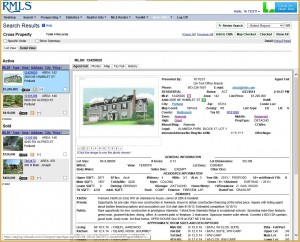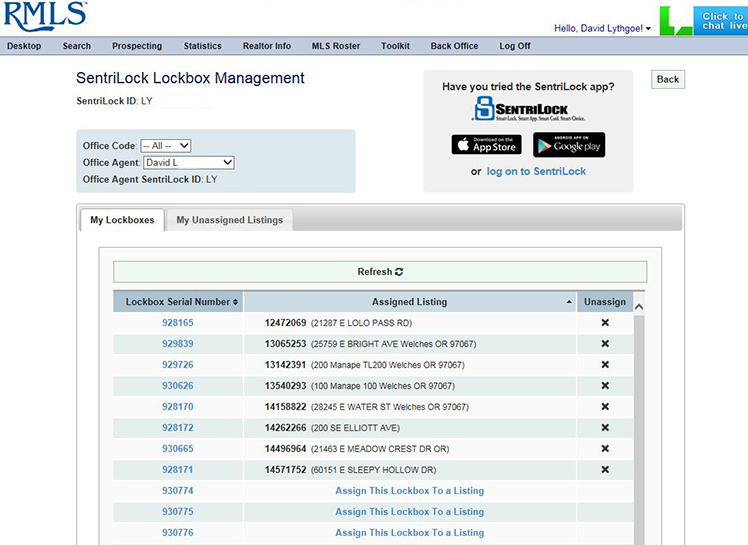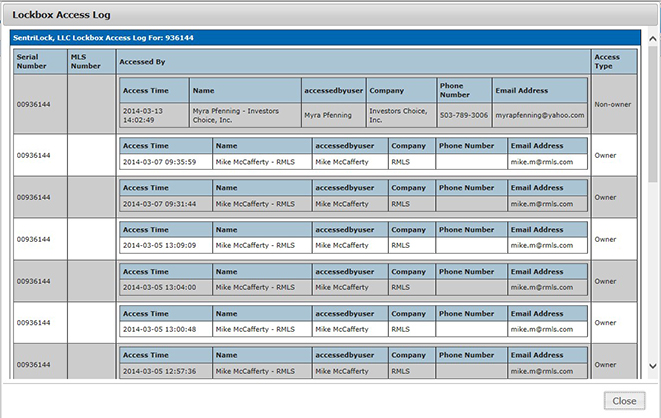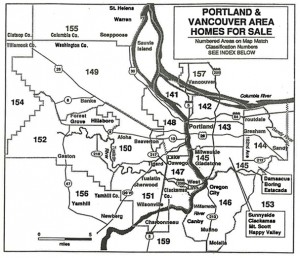![MLS Insight: Disaster Recovery Planning at RMLS™]()
by RMLS Communication Department | Jan 30, 2015
 MLS Insight is a series about how things work at RMLS™.
MLS Insight is a series about how things work at RMLS™.
RMLS™ began disaster recovery/business continuance (DR/BC) planning in earnest in 2002. The events of September 11, 2001, brought home the absolute necessity for this kind of planning, as it did for many businesses. Of course, part of running a responsible business has always been planning for emergencies and contingencies, but that process was formalized for RMLS™ starting in 2002.
Our first attempts at documenting the steps for disaster recovery were a little clumsy and hard to maintain. We are now on our third iteration of our DR/BC plan, and have refined it to identify the response needed for various types and levels of events—a snow day or an RMLSweb outage to the loss of our corporate facility due to earthquake or fire.
Everyone at RMLS™ has a role in helping to respond appropriately to situations that threaten the safety of employees and the continuity of the services we provide. Of course, the highest priority in any crisis is care for life and physical safety of anyone present, if that is an issue. After that, attention goes to reducing loss of data and assets. Since our service is critical to our subscribers, our goal is uninterrupted service, so a focus on speedy recovery and communication are key elements of our planning.
Part of that speedy recovery is having a redundant database and servers for RMLSweb. In 2008, we moved our DR/BC servers from a location in Portland to a building in Roseburg, built in partnership with the Douglas County Association of REALTORS®. Data is continually replicated to those servers, and during maintenance mode each month, RMLSweb actually operates from Roseburg while the main Portland servers receive their patches and updates.
Disaster recovery planning is not something that you can do once and forget about. It needs to be part of the business plan and a living, changing process
The next post will focus on listing data accuracy. If you have any questions you would like to have answered, I encourage you to post a comment.
Photo: iStockPhoto/Endurodog
![MLS Insight: Disaster Recovery Planning at RMLS™]()
by RMLS Communication Department | Jan 30, 2015
 MLS Insight is a series about how things work at RMLS™.
MLS Insight is a series about how things work at RMLS™.
RMLS™ began disaster recovery/business continuance (DR/BC) planning in earnest in 2002. The events of September 11, 2001, brought home the absolute necessity for this kind of planning, as it did for many businesses. Of course, part of running a responsible business has always been planning for emergencies and contingencies, but that process was formalized for RMLS™ starting in 2002.
Our first attempts at documenting the steps for disaster recovery were a little clumsy and hard to maintain. We are now on our third iteration of our DR/BC plan, and have refined it to identify the response needed for various types and levels of events—a snow day or an RMLSweb outage to the loss of our corporate facility due to earthquake or fire.
Everyone at RMLS™ has a role in helping to respond appropriately to situations that threaten the safety of employees and the continuity of the services we provide. Of course, the highest priority in any crisis is care for life and physical safety of anyone present, if that is an issue. After that, attention goes to reducing loss of data and assets. Since our service is critical to our subscribers, our goal is uninterrupted service, so a focus on speedy recovery and communication are key elements of our planning.
Part of that speedy recovery is having a redundant database and servers for RMLSweb. In 2008, we moved our DR/BC servers from a location in Portland to a building in Roseburg, built in partnership with the Douglas County Association of REALTORS®. Data is continually replicated to those servers, and during maintenance mode each month, RMLSweb actually operates from Roseburg while the main Portland servers receive their patches and updates.
Disaster recovery planning is not something that you can do once and forget about. It needs to be part of the business plan and a living, changing process
The next post will focus on listing data accuracy. If you have any questions you would like to have answered, I encourage you to post a comment.
Photo: iStockPhoto/Endurodog
![MLS Insight: Disaster Recovery Planning at RMLS™]()
by RMLS Communication Department | Jan 30, 2015
 MLS Insight is a series about how things work at RMLS™.
MLS Insight is a series about how things work at RMLS™.
RMLS™ began disaster recovery/business continuance (DR/BC) planning in earnest in 2002. The events of September 11, 2001, brought home the absolute necessity for this kind of planning, as it did for many businesses. Of course, part of running a responsible business has always been planning for emergencies and contingencies, but that process was formalized for RMLS™ starting in 2002.
Our first attempts at documenting the steps for disaster recovery were a little clumsy and hard to maintain. We are now on our third iteration of our DR/BC plan, and have refined it to identify the response needed for various types and levels of events—a snow day or an RMLSweb outage to the loss of our corporate facility due to earthquake or fire.
Everyone at RMLS™ has a role in helping to respond appropriately to situations that threaten the safety of employees and the continuity of the services we provide. Of course, the highest priority in any crisis is care for life and physical safety of anyone present, if that is an issue. After that, attention goes to reducing loss of data and assets. Since our service is critical to our subscribers, our goal is uninterrupted service, so a focus on speedy recovery and communication are key elements of our planning.
Part of that speedy recovery is having a redundant database and servers for RMLSweb. In 2008, we moved our DR/BC servers from a location in Portland to a building in Roseburg, built in partnership with the Douglas County Association of REALTORS®. Data is continually replicated to those servers, and during maintenance mode each month, RMLSweb actually operates from Roseburg while the main Portland servers receive their patches and updates.
Disaster recovery planning is not something that you can do once and forget about. It needs to be part of the business plan and a living, changing process
The next post will focus on listing data accuracy. If you have any questions you would like to have answered, I encourage you to post a comment.
Photo: iStockPhoto/Endurodog
![MLS Insight: Disaster Recovery Planning at RMLS™]()
by RMLS Communication Department | Jan 29, 2015
RMLS™ released a round of site improvements and bug fixes to RMLSweb that went live this morning. RE Technology is now available for free to RMLS™ subscribers, detail view has been expanded again, and a comparable mapping component has been added to the CMA report! Those are just a few of the improvements you may notice around the site starting today.
RE Technology
 RMLS™ is now offering subscribers access to RE Technology free of charge. RE Technology is an educational resource for real estate professionals that shows agents how to use technology to find more leads, close more deals, and boost the bottom line. The site contains useful tools in addition to connecting REALTORS® to the knowledge to leverage these tools adeptly.
RMLS™ is now offering subscribers access to RE Technology free of charge. RE Technology is an educational resource for real estate professionals that shows agents how to use technology to find more leads, close more deals, and boost the bottom line. The site contains useful tools in addition to connecting REALTORS® to the knowledge to leverage these tools adeptly.
New users of RE Technology will need to create an account to begin using the site. Once you have an account, logging in to RMLSweb will also enable access to RE Technology without signing on again.
Access RE Technology on RMLSweb by navigating to one of the two links menus: either on the left sidebar of the desktop page, or under Toolkit in the navigation menu.
Detail View Grows Again
 Detail view on RMLSweb has been a hit with users, so RMLS™ continues to integrate the feature throughout the site. Starting today, subscribers will be able to access the detail view tab on search results for taxes, hotsheets, open houses, and broker tours.
Detail view on RMLSweb has been a hit with users, so RMLS™ continues to integrate the feature throughout the site. Starting today, subscribers will be able to access the detail view tab on search results for taxes, hotsheets, open houses, and broker tours.
Detail view presents a solution to some common problems subscribers encounter. Users can switch between reports without reloading an entire page, meaning a subscriber can browse listings more quickly without losing their place in a long list of search results.
Map of Comparables in CMA Report
 Where are the comparable properties located in relation to the subject property? The CMA report now includes the option to include a map of comparables in the report.
Where are the comparable properties located in relation to the subject property? The CMA report now includes the option to include a map of comparables in the report.
Access this feature by navigating to the Report tab in CMA Profiles. Under “Options,” check the box that includes “Map of Comparables to Your Home,” then generate your report as usual.
Easy!
More Improvements…
Several other improvements and bug fixes were released along with the new features named above.
• Certain error messages on RMLSweb that used to appear in black text now appear in red, a visual popout that helps subscribers see what needs to be changed for a search to work.
• Subscribers using Chrome may have experienced issues clicking on the calendar button to select a date. This bug has been fixed.
• Did you know that it is impossible to search for bank-owned and short sale properties at the same time? It’s a common error, and RMLSweb now sports an error message clarifying the problem when it occurs.
And Even More Improvements!
Even more minor changes were made this week—housecleaning business that subscribers may never notice because we’re aiming to create a seamless user experience.
If you ever encounter something you think may have changed, consider looking at the deployment history of RMLSweb or contacting the RMLS™ Help Desk for assistance at (503) 872-8002 or (877) 256-2169.
UPDATE (February 4, 2015)
RMLS™ has discovered an issue with the new CMA mapping feature, so it has been taken offline temporarily. We are working hard to resolve the issue and restore the feature as quickly as possible.
![MLS Insight: Disaster Recovery Planning at RMLS™]()
by RMLS Communication Department | Nov 14, 2014
Ever had clients confused by the abbreviations on a Client Full report, or wish that you could assign a new listing to a lockbox within RMLSweb? RMLS™ is pleased to report upcoming improvements to RMLSweb designed to make things easier for our subscribers.
SentriLock Integration
Beginning November 20th, subscribers will be able to perform basic SentriLock functions on the site such as assigning/unassigning a lockbox to a listing and viewing lockbox access information.
 Access this new feature in Listing Load using the SentriLock button below the RMLSweb navigation menu (above).
Access this new feature in Listing Load using the SentriLock button below the RMLSweb navigation menu (above).
 In “My Lockboxes” (above), a list of your lockboxes will appear along with the ML# and the address they’re currently assigned to. Click the X to unassign the listing, but be aware that showing surveys will be cleared out once the lockbox has been unassigned.
In “My Lockboxes” (above), a list of your lockboxes will appear along with the ML# and the address they’re currently assigned to. Click the X to unassign the listing, but be aware that showing surveys will be cleared out once the lockbox has been unassigned.
To assign a lockbox to a listing, click on the “My Unassigned Listings” tab. Active listings will be displayed, and subscribers can click the link to assign a lockbox to a particular listing.
 If you’d rather have a look at the history of lockbox accesses, click the lockbox serial number in the “My Lockboxes” tab (above).
If you’d rather have a look at the history of lockbox accesses, click the lockbox serial number in the “My Lockboxes” tab (above).
RMLSweb communicates lockbox changes back to SentriLock almost instantly, meaning that it’s even more important for subscribers to keep their SentriCard® updated by using their RAD.
Report Improvements
When the SentriLock integration is released, subscribers may also notice a few improvements to reports on RMLSweb. Print buttons will now be available on all tabs in detail view.
We’re also adding two new unabbreviated reports to the list of available reports: Agent Unabbreviated and Client Unabbreviated. These reports are self-explanatory: no abbreviations to look up or need to cross-reference the RMLSweb Listing Abbreviations document! Keep in mind these unabbreviated reports will require more room and pages to print out—we’ll hope you’ll keep the environment in mind. An Agent Unabbreviated tab will also be available for easy onscreen viewing.
RMLS™ hopes this latest batch of improvements to RMLSweb will help subscribers execute their business. As always, feedback about this latest round of improvements is welcome. If you have ideas or suggestions to make RMLSweb even better, contact the RMLS™ Help Desk at (503) 872-8002.
![MLS Insight: Disaster Recovery Planning at RMLS™]()
by RMLS Communication Department | Sep 25, 2014
This post is part of MLS Insight, a series about how things work at RMLS™.
 An MLS without area numbers: this idea might strike terror in your heart….or you might say to yourself, “it’s about time!” In any case, it is not a proposal that is currently on the table, but with the changes in technology and the way people think about location, it is probably not too early to start the conversation.
An MLS without area numbers: this idea might strike terror in your heart….or you might say to yourself, “it’s about time!” In any case, it is not a proposal that is currently on the table, but with the changes in technology and the way people think about location, it is probably not too early to start the conversation.
When RMLS™ opened its doors in 1991, it was to the REALTORS® in the Portland metropolitan area in Oregon. At that time, the major advertising vehicle for homes for sale was the newspaper—The Oregonian, in our case. RMLS™ based its MLS area numbers on the map and classified ad numbers of The Oregonian. The 12 core areas for Multnomah, Clackamas, and Washington counties have remained basically unchanged for 23 years.
When regions were added, local preferences regarding area numbers were retained. Clark County, for example, is divided into more than 30 areas, while Coos County is contained in one area.
The end result is more than 200 area numbers in RMLSweb, without a common reason why each geographical area is an “Area Number.” In some cases, a single area comprises several large but dissimilar communities. In others, areas may have so few listings and sales as a sample size that few, if any, conclusions could be drawn from looking at their data. In fact, there are rural areas that had no new listings and no closed sales in all of 2013.
In the world of today, The Oregonian posts its real estate ads online and there is no search option for area numbers. GPS location services have replaced maps to a large degree. It is a very different world than the world of 1991, when there was a Thomas Brothers map in the car of virtually every REALTOR®.
Here are some things to think about:
What role do area numbers play in the life of an RMLS™ subscriber today?
Has map search replaced searching by area number? Could it?
What could replace area numbers for searching besides map search—counties? zip codes? There should be something to narrow the initial search that pertains to location.
What about Market Action and other statistical reports? (Some counties are already reported in terms of zip codes in Market Action.)
If and when we ever do move away from area numbers, we need to have a good plan to meet the needs of our subscribers. Ideas?
Thanks for voyaging into the future with me. Next month we will talk with the various departments at RMLS™ and their plans for the upcoming year. If you have any questions you would like to have answered about how things work at RMLS™, I encourage you to post a comment to this blog.
UPDATE (November 20, 2014): RMLS™ is not the only MLS engaging in this interesting discussion. Here’s an article from the Seattle Post-Intelligencer about NWMLS area numbers.
 MLS Insight is a series about how things work at RMLS™.
MLS Insight is a series about how things work at RMLS™.





